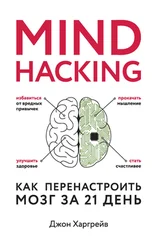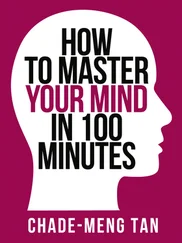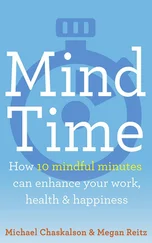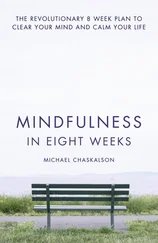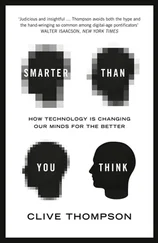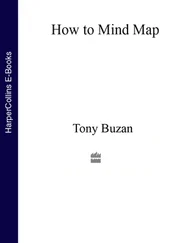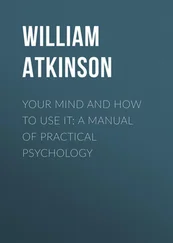Mind hacking is free. Mind hacking is experimental. Mind hacking is mastery.
We’ve learned the ground rules. Now let’s learn how to hack.
Hello, World!
It’s 2:00 p.m. on a cloudy November afternoon, and nearly one hundred developers are furiously typing on laptops at the Microsoft complex in Cambridge, Massachusetts. A large table is covered with energy drinks, coffee, and half-eaten pasta, the evidence of a massive all-night coding session. One of the developers is blowing a straw over a circuit board, trying to play “Mary Had a Little Lamb” on a makeshift electric harmonica. Another group is holed up in a conference room in front of a massive LED grid, which pulses in time to a techno beat.
This is the annual Music Hack Day, a twenty-four-hour “hackathon” to build something cool related to technology and music. The goal of a hackathon is to “pitch, program, and present” 14a working app within an incredibly short window of time—say, twenty-four hours. Teams pitch their ideas to an enthusiastic crowd, pull an all-night coding marathon to get it finished, then demo their final software product the following afternoon. Unlike the typical software development cycle that can take months, hackathons cram all that innovation and problem solving into one caffeine-fueled blur of excitement.
By 3:00 it’s time for the demos to start in the main conference room. There are sixty teams, so each group gets exactly two minutes to present. The first team shows off a stringed instrument made of yarn, which plays pre-recorded samples when you pluck the strings. Another shows an app called Hipstars, which analyzes your music tastes and gives you a one-through-five hipster rating. One group shows off a demo called Entrance Music that senses when you enter a room, then cues a computer to play your own customized theme song. The demos are creative, weird, and entertaining— and they were built in twenty-four hours .
How do they do it?
Talking about the “right way” to hack is like talking about the “right way” to play jazz piano, or write a novel, or raise a child. Hacking is a blend of creative and technical skills, an art and a science. There is an overall process , however, that we can talk about in three broad categories.
• Analyzing.We look at an existing piece of technology and figure out how it works. If we’re hacking a remote control, for example, we might learn all about its programming codes or circuitry. Along the way, we identify problems or bugs and think of a way around them.
• Imagining.Creativity is at the core of hacking, ideally with an attitude of fun and playfulness. We imagine something new, some unexpected use for the thing: Could that remote control lift a toilet seat up and down?
• Reprogramming.We repurpose the technology to create the thing we’ve imagined. We write the code, solder the circuit board, duct tape the hovercraft. Through skill, iteration, and persistence, we make the idea a reality. (Behold, the remote-controlled toilet seat!)
In mind hacking, we take the same approach, analyzingthe “source code” of the mind, imagininghow cool it would be to make it do something else, then reprogrammingthe code with determined persistence until we see our lives transformed.
This book, then, is organized into three parts—Analyzing, Imagining, and Reprogramming—with do-it-yourself “Mind Games” to help you learn each set of skills. I highly encourage you to play the Mind Games and to keep track of your daily data in the practice sheet at the end of this book, or via the app at www.mindhacki.ng. This is how you monitor your progress and prove to yourself the program is working. Like a scientist, write down your results .
Not only will writing things down help you learn mind hacking, but multiple studies have shown it will help you feel better . 15In one experiment, people who had recently lost their jobs spent a few minutes each day writing their thoughts and feelings about the layoff in a personal journal. After a few weeks, not only did test subjects experience improved physical and psychological well-being, but they were rehired significantly faster than those who did not write. 16
When we think of great explorers like Columbus, Vespucci, and Cousteau, we hold them up as courageous heroes who conquered the globe. But now the outer world has been discovered; the next phase is inward , into the mysterious and fathomless reaches of our own minds. Those of us exploring our own mental potential are the next generation of explorers—and the best part is, you can join us . But, like these explorers, you have to draw a map. (Magellan didn’t go anywhere without a pencil.)
The time has come to decide.
Your Moment of Truth
There is a tradition among geeks, when learning a new programming language, to start by creating a simple one-line program that displays the words:
> Hello, World!
Not only is this an easy first step to learning a new language, it also represents a sort of happy birth into the new environment. If you really want to learn mind hacking (and not just read about it), then I challenge you now to build up your desire, overcome your inertia, and take this critical first step!
MIND GAME
Accepting the Quest
Turn to the practice sheet at the end of this book. Write today’s date, followed by “Hello, World!”
Decide on a specific time and place you will practice mind hacking each day, and keep the book in that spot to record your daily data.
You can also download the app at www.mindhacki.ngfor daily reminders and community support.
The print edition of this book has two powerful benefits. First, you can write directly in the practice sheet—and I hope you will, since it’s paper, and paper was invented for writing . Second, the book itself can serve as a visual prompt for your daily practice.
I recommend leaving Mind Hacking next to your bed. Each night, record the results of your daily practice in the back of the book. Each morning, as soon as you get up , the book will serve as a visual reminder to start your practice again. The physical book is designed to help you create this virtuous circle, a self-reinforcing loop that moves you forward.
Similarly, the practice sheet is designed as a twenty-one-day plan, an easy-to-follow framework that will cement your mind hacking skills, transform your thinking, and change your life. It’s fine to miss a day here or there, but you will get maximum benefit from mind hacking if you complete the entire sheet. If you’re serious about becoming a mind hacker, then make that commitment to achieve 100 percent completion.
Casual readers can still benefit from the book by picking up specific techniques that you can try out on your own thinking. For those hacking hobbyists, you can find a Quick Reference list of mind hacks at the end of the book. If you find them useful, then I encourage you to reread the book and complete the full twenty-one-day program.
Along the way, make it a point to teach what you’re learning to other people . Share your mind hacks with others! The Roman philosopher Seneca said, “While we teach, we learn,” and educators have long known the best way to lock in your own understanding of a topic is to teach it to someone else. Explaining these concepts to other people will not only help them, it will help you , because you will be able to articulate your understanding more clearly.
Ultimately, mind hacking is a great experiment that you can test for yourself. In fact, the only way to verify that mind hacking works is to try it on your own mind . The testing environment is yourself, and you are the ultimate proof.
Читать дальше
![Джон Харгрейв Mind Hacking [How to Change Your Mind for Good in 21 Days] обложка книги](/books/404192/dzhon-hargrejv-mind-hacking-how-to-change-your-min-cover.webp)


